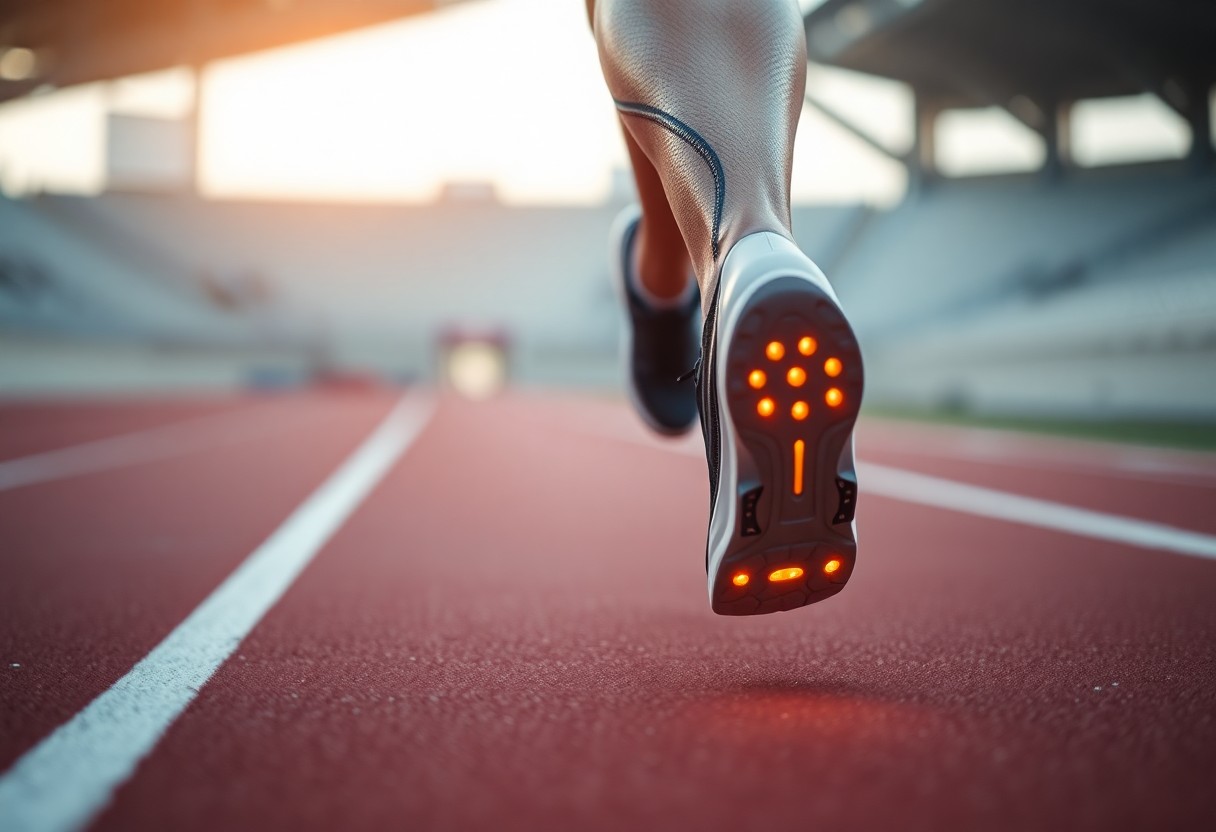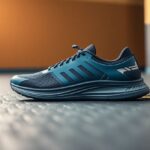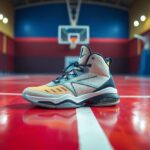
Explore the groundbreaking advancements in running footwear technology that have revolutionized the domain of performance enhancement for endurance athletes. These innovations represent not just incremental improvements but rather significant breakthroughs that can fundamentally change your approach to running, enabling you to perform at your best.
The realm of performance optimization in endurance running has been dramatically transformed by cutting-edge footwear technology, opening up extraordinary opportunities for you to maximize your athletic capabilities. Discover how state-of-the-art shoe designs can significantly reduce your metabolic expenditure and boost your running economy. By incorporating carbon fiber plates and innovative midsole materials, these shoes are engineered to provide exceptional energy return mechanisms, potentially lowering your oxygen consumption by up to 4%. Whether you are a competitive athlete or a dedicated amateur, understanding these biomechanical advancements can empower you to make informed decisions about your running gear and enhance your race performance.
 Continue reading to dive deeper into the complexities of running footwear that can elevate your athletic performance:
Continue reading to dive deeper into the complexities of running footwear that can elevate your athletic performance:
Unlocking Maximum Energy Return: Understanding the Science of Advanced Running Shoes
The technology embedded in advanced running shoes employs sophisticated biomechanical principles to enhance energy transfer during running. Innovative design features collaborate seamlessly to decrease metabolic expenditure, resulting in a highly effective system that improves running efficiency through carefully engineered materials and optimized geometric designs. By focusing on the mechanics of energy return, these shoes offer runners a significant advantage in both performance and stamina, allowing for longer runs with reduced fatigue levels and enhanced endurance.
Understanding the Curvature Dynamics of Carbon Fiber Plates for Improved Performance
Carbon fiber plates are designed with precise geometric configurations that effectively redirect kinetic energy throughout the running motion. Optimal curvature angles between 12°-15° facilitate maximum energy storage and return, with finite element modeling showcasing an impressive energy return efficiency of up to 93% in prototype designs. These meticulously constructed plates create a spring-like effect that minimizes muscular effort during toe-off phases, enabling runners to conserve energy over long distances, thereby significantly boosting both endurance and overall performance.
Comparing the Innovations of TPU and EVA in Midsoles for Enhanced Performance
Material selection is pivotal in determining the performance of running shoes, with thermoplastic polyurethane (TPU) emerging as a leading midsole technology. Comparative analyses highlight TPU’s substantial benefits in energy return and impact absorption, equipping runners with superior biomechanical efficiency across various running conditions. The choice between TPU and EVA foam is crucial for athletes aiming to enhance their performance while minimizing injury risks during both training and competition.
| Energy Return | 18% higher in TPU |
| Oxygen Consumption Reduction | 2.4% lower with TPU |
A detailed examination of midsole materials reveals complex performance characteristics. TPU exhibits remarkable durability compared to traditional EVA foam, maintaining consistent mechanical properties over thousands of compression cycles. Runners benefit from enhanced energy return, reduced fatigue, and improved performance over long distances through these advanced material science innovations, significantly impacting their overall training outcomes and competitive results.
| Impact Absorption | TPU absorbs 37% more force |
| Rebound Elasticity | 89% maintained across 50,000 cycles |
 Explore further as we examine the effects of advanced footwear technology on metabolic efficiency:
Explore further as we examine the effects of advanced footwear technology on metabolic efficiency:
Assessing Metabolic Efficiency: Understanding Who Benefits Most from Advanced Footwear
Advanced footwear technology does not provide uniform benefits for all runners. Gains in metabolic efficiency vary substantially across different demographic groups, influenced by factors such as gender, age, and individual biomechanics. Researchers have identified nuanced patterns of metabolic response, revealing that the advantages of high-performance shoes extend beyond simple performance metrics, encompassing complex physiological adaptations unique to each runner’s biomechanical profile.
Analyzing Gender-Specific Performance Enhancements in Running
Female runners demonstrate a 3.2% improvement in metabolic power, compared to 4.2% in males, indicating intricate neuromuscular adaptations. Data regarding pelvic kinematics shows a 14% greater reduction in hip adduction angle for females utilizing advanced footwear, potentially clarifying the subtle differences in metabolic gains between genders. Understanding these differences can assist in customizing training regimens and footwear choices to optimize performance benefits for both male and female athletes.
Exploring Age-Related Advantages in Endurance Performance
Masters athletes aged 40 and older exhibit a 2.8% greater reduction in oxygen cost when using super shoes, likely compensating for reduced tendon elasticity. Tibial loading analysis reveals a 12% cumulative stress reduction per kilometer for older runners, suggesting significant benefits in both injury prevention and performance maintenance. These findings emphasize the critical role of advanced footwear technology in extending the competitive careers of older athletes.
The advantages of advanced footwear technology for older runners extend well beyond mere performance metrics. Biomechanical studies indicate that older runners experience more profound adaptations due to compensatory mechanisms. Decreased tendon stiffness and altered muscle recruitment patterns interact with shoe technology to create a unique performance enhancement profile. Notably, the energy return mechanism facilitated by carbon plates appears to counteract age-related biomechanical inefficiencies, potentially prolonging competitive running careers by alleviating the physiological constraints typically encountered by aging athletes.
Continue reading to uncover more about the implications of advanced footwear technology on injury risks:
Understanding the Impact of Running Footwear on Injury Risk
Advanced footwear technology introduces complex biomechanical interactions that require careful assessment of potential injury risks. Runners must consider the balance between performance enhancement and physiological adaptation. Longitudinal studies indicate subtle yet significant changes in muscular recruitment patterns, joint loading, and proprioceptive feedback when transitioning to high-performance running shoes, underscoring the importance of a balanced training and recovery strategy.
Injury Risks: The Cost of Enhanced Performance
Biomechanical research reveals a 9% increase in strain rates on the Achilles tendon among users of super shoes during high-intensity training. Plantar pressure mapping indicates a 22% increase in loading on the forefoot compared to traditional trainers, especially when running on challenging terrains such as downhill slopes. These findings suggest that while metabolic efficiency may improve, runners should incorporate targeted strength and adaptation protocols to mitigate potential injury risks and ensure long-term athletic health.
Adapting Training Protocols for Optimal Gait Adjustments
Your biomechanical response to advanced footwear necessitates strategic modifications in your training regimen. Gait retraining is essential to optimize the unique energy return mechanisms inherent in carbon-plated shoes. Athletes should focus on developing neuromuscular patterns that align with the biomechanical design of their shoes, potentially reducing injury risks while maximizing performance benefits.
Comprehensive gait adaptation strategies involve multifaceted methods to effectively integrate advanced footwear technology. Biomechanical assessments indicate that runners typically require approximately 6-8 weeks of progressive training to fully adapt to the distinctive mechanical properties of super shoes. This adaptation period includes targeted eccentric strengthening exercises, modified interval training techniques, and careful monitoring of lower limb biomechanics. Both professional athletes and committed runners greatly benefit from periodic 3D gait analysis to track subtle changes in movement patterns, ensuring optimal alignment of advanced footwear technology with individual biomechanical characteristics.
 Explore the future of footwear technology and its implications for runners:
Explore the future of footwear technology and its implications for runners:
Discovering Future Innovations in Running Footwear Technology
Emerging technologies are poised to redefine the design of running shoes, pushing the boundaries of biomechanical efficiency and performance optimization. Cutting-edge research focuses on personalized solutions that cater to individual biomechanics, utilizing advanced materials, computational modeling, and integrated sensor technologies to craft a new generation of intelligent footwear designed specifically for elite athletes.
Revolutionizing Footwear Design with 3D Printed Midsoles
Optimization algorithms for lattice structures now enable precise variations in stiffness tailored to individual foot pressure maps. Prototype evaluations reveal an additional 5.1% in metabolic savings compared to conventional mass-produced models, with computational design allowing for unprecedented customization of midsole geometries to enhance energy return and minimize biomechanical stress. This innovative approach guarantees that each runner achieves optimal performance tailored to their unique physical characteristics.
Incorporating Smart Technology for Enhanced Performance Monitoring
Innovative sensor technologies are transforming running shoes into advanced performance tracking devices. Real-time ground reaction force feedback systems can facilitate a 1.9% reduction in oxygen costs through micro-adjustments in cadence, providing runners with immediate biomechanical insights during both training and competitive events. These advancements are essential for athletes seeking to refine their technique and boost their performance metrics.
The integration of advanced sensors marks a significant advancement in performance monitoring technology. Multi-axis accelerometers, pressure-sensitive matrices, and embedded microprocessors now capture intricate biomechanical data with unparalleled accuracy. These intelligent systems analyze gait mechanics, impact forces, and energy expenditure in real-time, offering runners detailed insights into their movement patterns. Machine learning algorithms can predict potential injury risks, optimize training loads, and recommend personalized technique modifications based on thorough movement analysis, transforming running shoes from passive gear into dynamic performance enhancement tools.
Finally, gain a holistic understanding of the transformative landscape shaped by advanced footwear technology in endurance running:
Embracing the Future of Advanced Footwear Technology in Running
In conclusion, you have delved into the transformative landscape of advanced footwear technology in endurance running. Your insights now encompass how innovative design elements such as carbon plates and high-performance midsole materials can significantly decrease metabolic costs and enhance running efficiency. By harnessing scientific insights, you can recognize that these shoes offer more than just minor improvements—they represent a paradigm shift in athletic performance. Your investment in such technology may translate into improved running economy, reduced energy expenditure, and optimized biomechanical responses across various athletic demographics.
The Article Biomechanical Efficiency of Advanced Footwear Technology: Metabolic Cost Reduction and Performance Enhancement in Endurance Running appeared first on My Shoes Finder.
The Article Biomechanical Efficiency in Advanced Footwear for Runners Was Found On https://limitsofstrategy.com
The Article Biomechanical Efficiency: Advanced Footwear for Runners First Appeared ON
: https://ad4sc.com






No responses yet